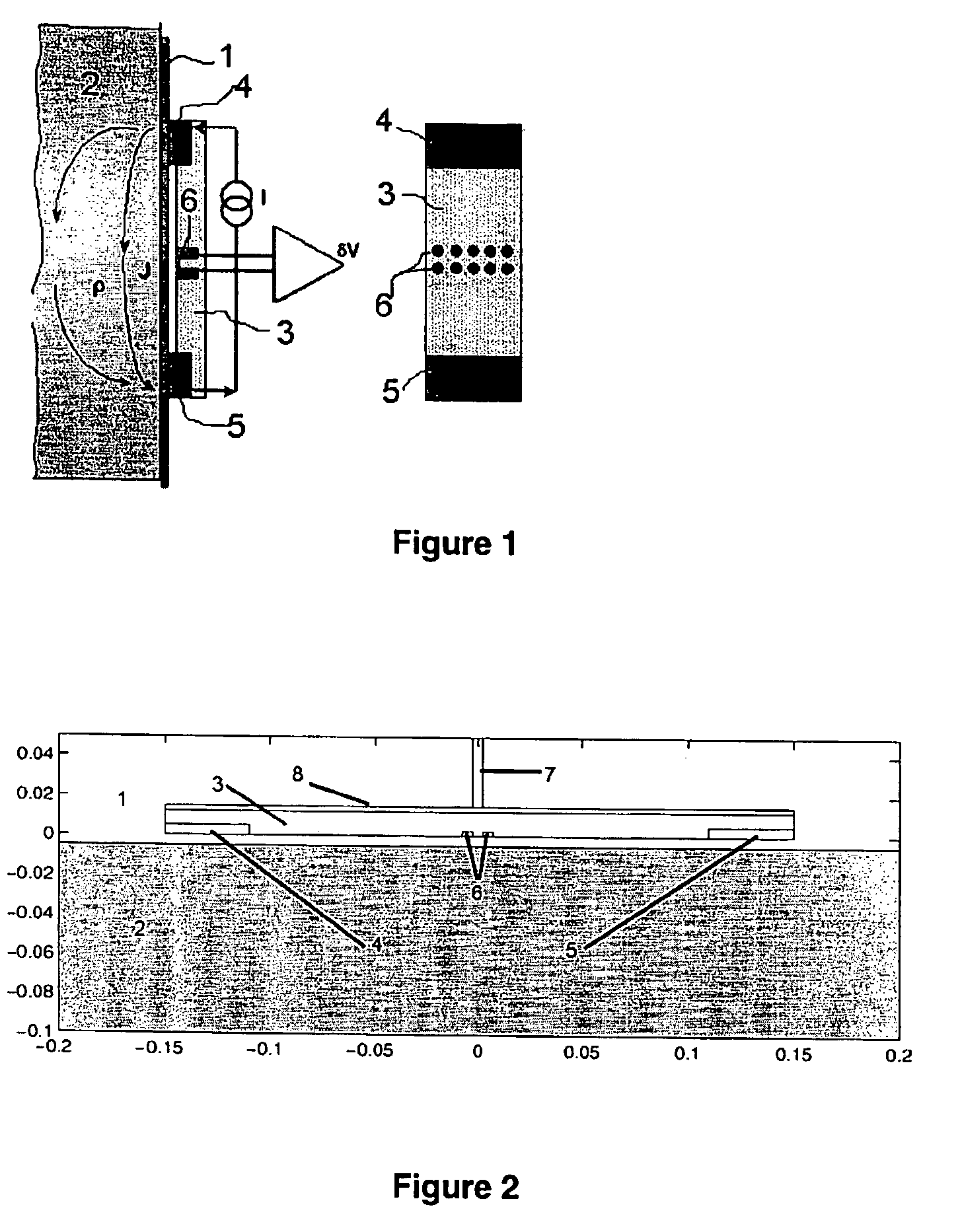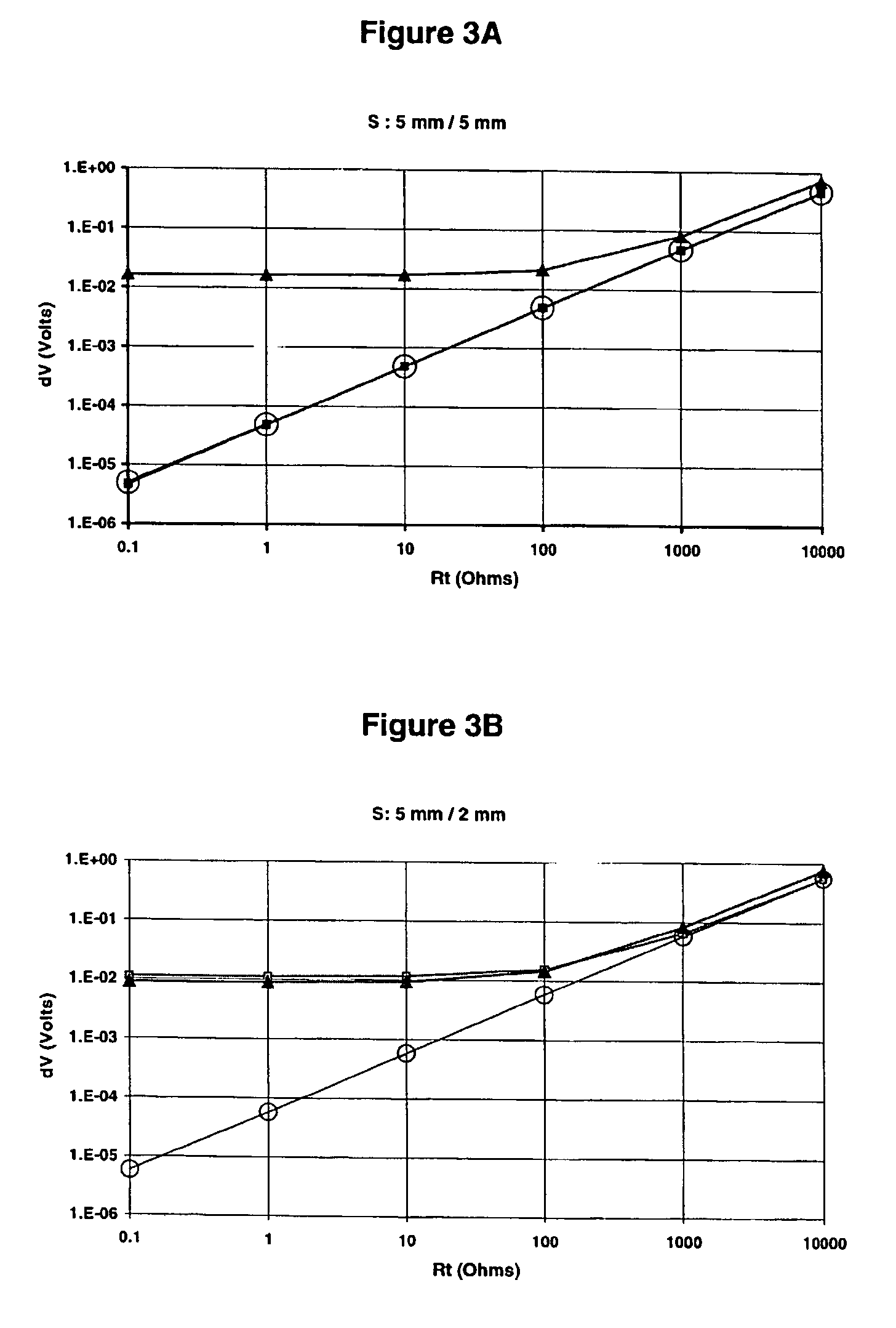Formation imaging while drilling in non-conductive fluids
a technology of non-conductive fluids and formation imaging, which is applied in the direction of reradiation, instruments, and borehole/well accessories, etc., can solve the problems of dc giving rise to noise problems, difficult to work with, and difficult to obtain good quality images
- Summary
- Abstract
- Description
- Claims
- Application Information
AI Technical Summary
Benefits of technology
Problems solved by technology
Method used
Image
Examples
first embodiment
[0063]A first embodiment consists of a conductive metallic pad structure that contains insulating inserts around the source and return electrodes and measurement electrodes. Therefore, in this embodiment of an apparatus according to the invention, it is the conductive pad itself that shields the measurement electrodes.
[0064]The conductive pad 90 is held at a potential close to that of the formation in front of the measurement electrodes. For example, in one preferred implementation the pad is driven at the measured potential of the formation in front of the measurement electrodes 6. As mentioned in the PCT Patent Application PCT / EP01 / 03718 A1, an electronic circuit, not shown, averages all the potential values measured by all the measurement electrodes.
second embodiment
[0065]A second embodiment consists of a pad made of insulating material and shielding means constituted of conducting (e.g., metallic) sheets. In order not to weaken the outside parts of the shielding sheets can be molded inside the pad. Alternatively, conductive sheets can be placed on both the inside face and the outside face of the pad.
[0066]FIG. 6 shows one embodiment of a sensor having an insulating face and a conductive backplate disposed on an LWD tool. As shown, a sensor 300 in accordance with one embodiment of the invention is disposed on a rotating drilling assembly 310. The sensor 300 comprises a current injection electrode 301, a current return electrode 302, and an array of measurement electrodes 303, all of which disposed on an insulating pad 304. In addition, a conductive shield (or conductive backplate) 305 is disposed behind the electrodes, but insulated from the conductive drilling assembly 310 by an insulation layer or cavity 307. The sensor 300 may optionally inc...
PUM
| Property | Measurement | Unit |
|---|---|---|
| frequency | aaaaa | aaaaa |
| frequencies | aaaaa | aaaaa |
| current path | aaaaa | aaaaa |
Abstract
Description
Claims
Application Information
 Login to View More
Login to View More - R&D
- Intellectual Property
- Life Sciences
- Materials
- Tech Scout
- Unparalleled Data Quality
- Higher Quality Content
- 60% Fewer Hallucinations
Browse by: Latest US Patents, China's latest patents, Technical Efficacy Thesaurus, Application Domain, Technology Topic, Popular Technical Reports.
© 2025 PatSnap. All rights reserved.Legal|Privacy policy|Modern Slavery Act Transparency Statement|Sitemap|About US| Contact US: help@patsnap.com



